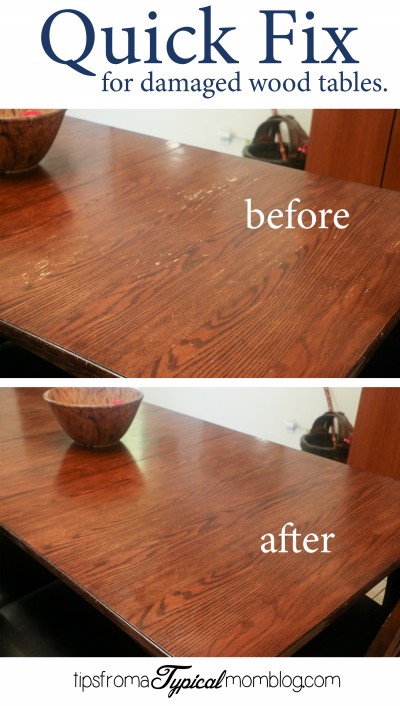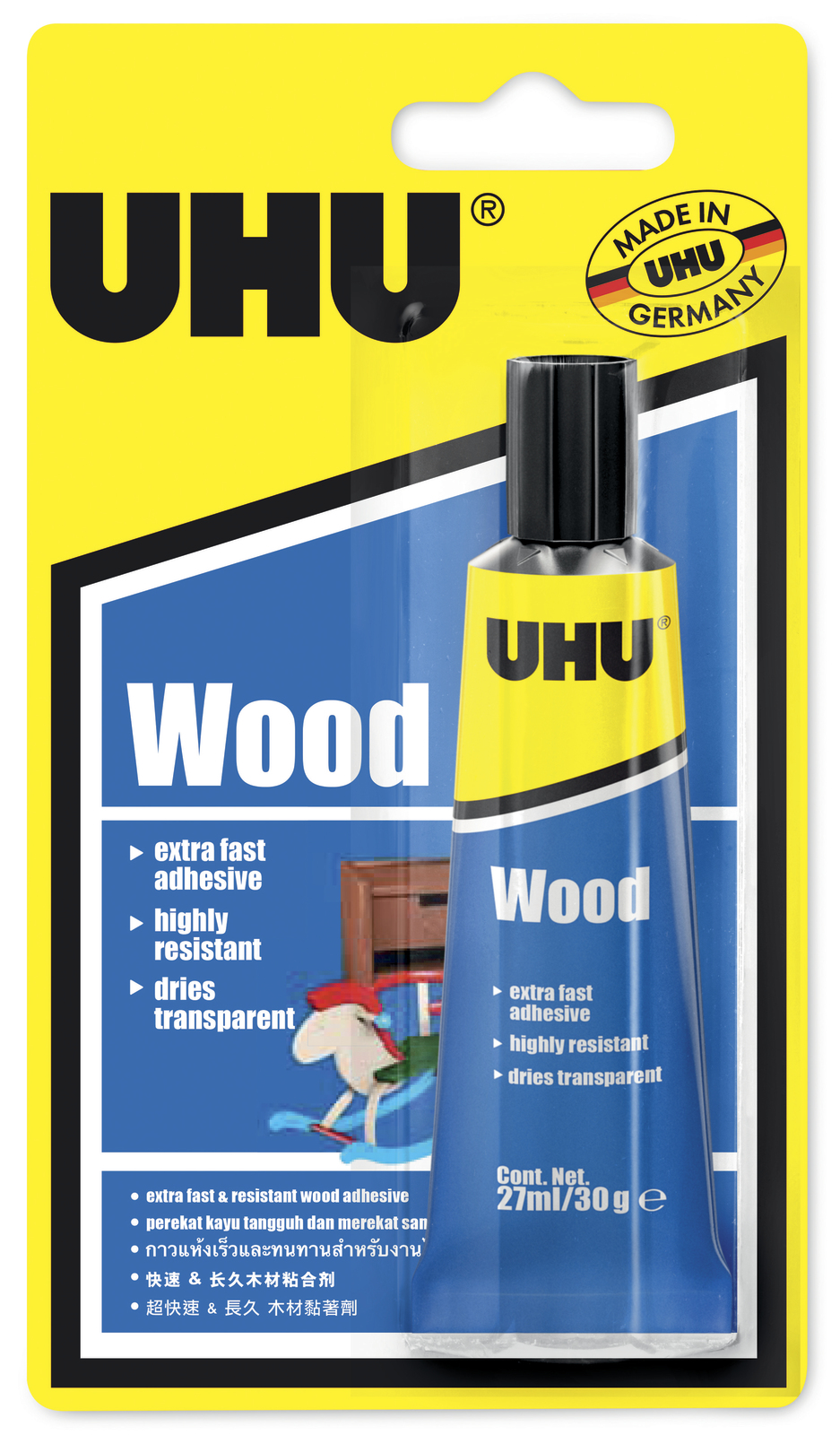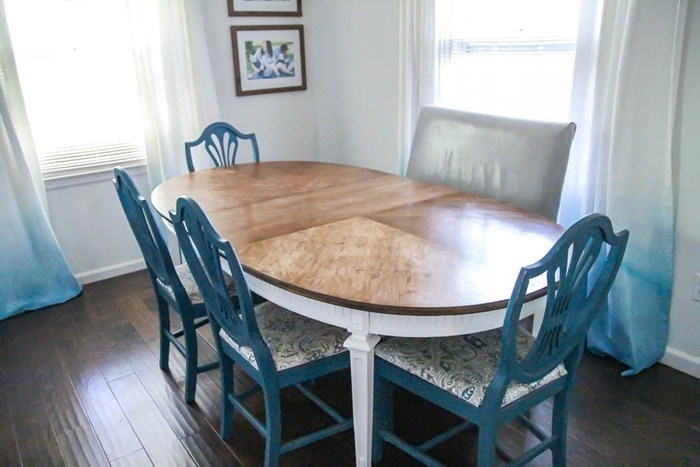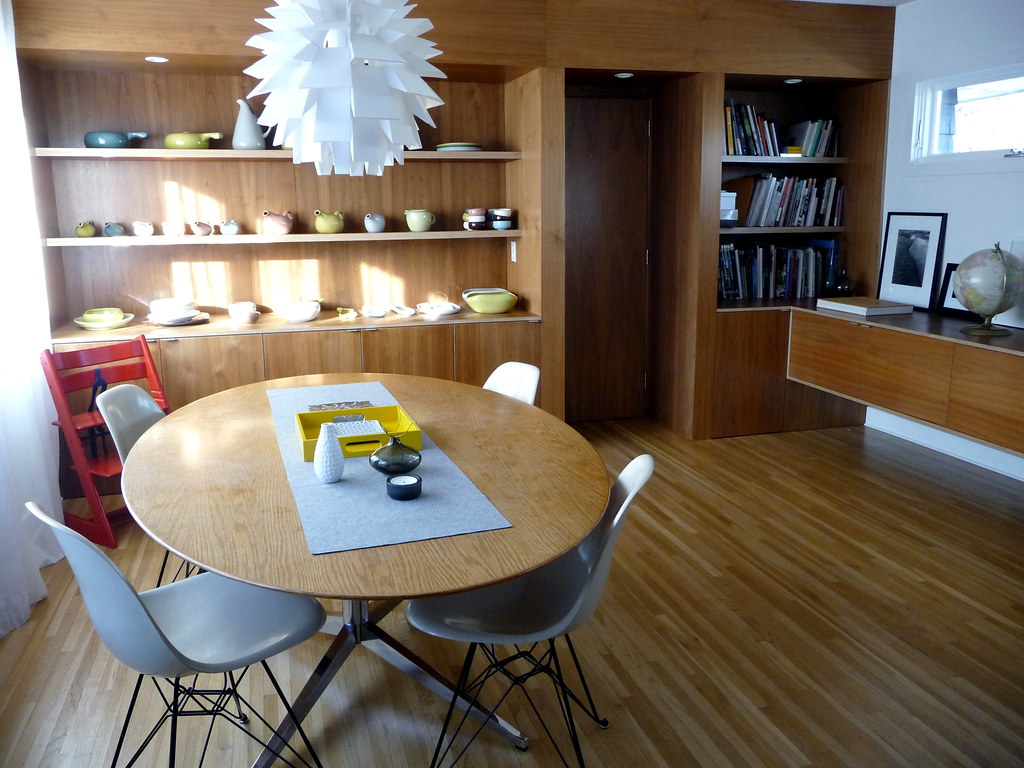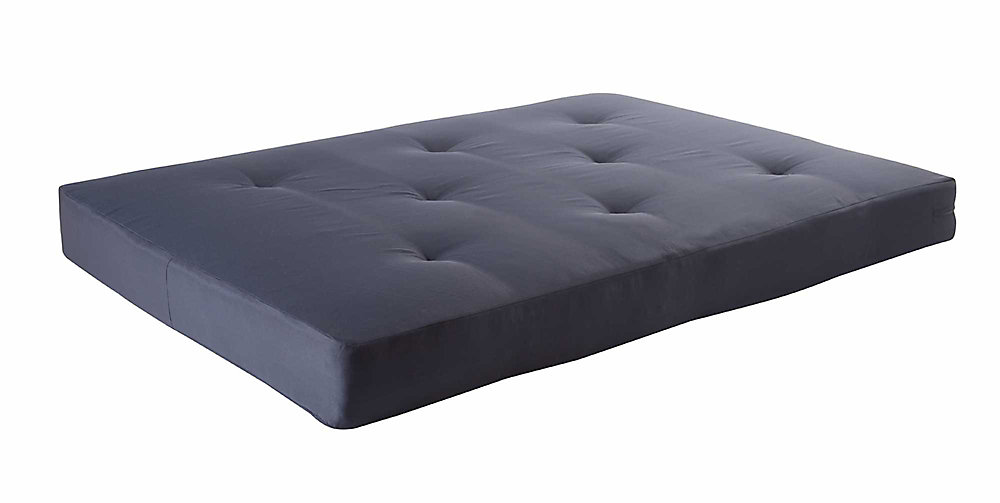If you have an old wood dining room table, chances are you have encountered the frustrating issue of loose joints at some point. This can be a common problem with older furniture, as the joints may become worn down over time. But don't worry, there are ways to fix and prevent this issue so you can continue to enjoy your beautiful dining table for years to come.Old Wood Dining Room Table Repair
One of the most common methods for repairing loose joints on a dining room table is using wood glue. This is a simple and affordable solution that can be done at home. Start by disassembling the table and cleaning the joints to remove any debris or old glue. Then, apply a generous amount of wood glue to the joints and reassemble the table. Use clamps to hold the joints together tightly and let the glue dry completely before using the table again.How to Fix Loose Joints on a Dining Room Table
If you're feeling handy, there are a few DIY methods for fixing loose joints on a dining room table. One option is to use wooden dowels to reinforce the joints. Simply drill holes into both sides of the joint and insert the dowels, then glue and clamp the joint back together. Another method is to use metal brackets to secure the joints. These can be found at hardware stores and are easy to install with screws.DIY Dining Room Table Repair
When it comes to wood glue, not all are created equal. It's important to choose a high-quality, waterproof wood glue for best results. Look for brands like Elmer's Carpenter's Wood Glue or Titebond III Ultimate Wood Glue. These glues are designed specifically for wood and will provide a strong and long-lasting bond. It's also important to follow the instructions on the glue bottle and allow enough time for the glue to dry completely.Wood Glue for Loose Joints
If you have a table with loose joints, it's important to address the issue as soon as possible. The longer you wait, the more damage can occur and the more difficult the repair may be. Regularly check and tighten any loose joints on your dining room table to prevent further damage and ensure the longevity of your furniture.Tightening Loose Joints on a Dining Room Table
Aside from loose joints, there are other common issues that can arise with old wood dining room tables. These may include scratches, water damage, or warping. Scratches can be easily fixed with wood filler and sanding, while water damage and warping may require professional repair services. It's important to regularly inspect and maintain your table to catch any issues early on.Common Issues with Old Wood Dining Room Tables
If your old dining room table is in need of more than just a few repairs, you may want to consider restoring it. This can be a fun and rewarding project, but it requires a bit more time and effort. Start by sanding down the surface of the table to remove any old finish and reveal the natural wood. Then, stain or paint the table to your desired color and add a protective finish. This will not only fix any existing issues, but also give your table a fresh new look.Restoring an Old Dining Room Table
If you're not comfortable with DIY repairs or your table requires extensive fixing, it's best to leave it to the professionals. There are many furniture repair companies that specialize in restoring and repairing old dining room tables. They have the tools, expertise, and experience to tackle any issue and bring your table back to its former glory. This may be a pricier option, but it can save you the hassle and ensure a high-quality repair.Professional Dining Room Table Repair Services
Prevention is key when it comes to maintaining the joints on your dining room table. One way to prevent loose joints is by using the table properly. Avoid putting excessive weight on one side of the table or leaning on it for support. Additionally, make sure to regularly clean and dust your table to prevent any buildup of debris that can cause wear and tear on the joints.Preventing Loose Joints on a Wood Dining Room Table
It's important to know how to identify loose joints on your dining room table in order to address the issue promptly. Some signs to look out for include wobbliness or creaking when using the table, visible gaps or separations between the joints, or visible cracks in the wood near the joints. If you notice any of these signs, it's time to take action and fix the loose joints before they become a bigger problem. In conclusion, loose joints on an old wood dining room table may be a common issue, but it's not something that can't be fixed. With the right methods and regular maintenance, you can keep your dining table in top shape and continue to enjoy it for many years to come.How to Identify Loose Joints on a Dining Room Table
How to Fix Loose Joints on an Old Wood Dining Room Table

Understanding the Problem
 If you have an old wood dining room table, you may have noticed that the joints have become loose over time. This could be due to wear and tear, changes in temperature and humidity, or simply the age of the table. Loose joints can be a nuisance, causing your table to wobble and making it difficult to use. However, with the right tools and techniques, you can easily fix this problem and restore your table to its former stability.
If you have an old wood dining room table, you may have noticed that the joints have become loose over time. This could be due to wear and tear, changes in temperature and humidity, or simply the age of the table. Loose joints can be a nuisance, causing your table to wobble and making it difficult to use. However, with the right tools and techniques, you can easily fix this problem and restore your table to its former stability.
Gather Your Supplies
 Before you begin fixing the loose joints on your dining room table, it's important to gather all the necessary supplies. You will need a hammer, wood glue, clamps, sandpaper, and a putty knife. You may also want to have some wood filler on hand in case there are any large gaps in the joints that need to be filled.
Before you begin fixing the loose joints on your dining room table, it's important to gather all the necessary supplies. You will need a hammer, wood glue, clamps, sandpaper, and a putty knife. You may also want to have some wood filler on hand in case there are any large gaps in the joints that need to be filled.
Preparing the Table
 Start by cleaning the area around the loose joints with a damp cloth. This will ensure that the wood glue will adhere properly. Next, use the sandpaper to lightly sand the inside of the joints to remove any old glue or debris. This will create a rough surface for the wood glue to stick to.
Start by cleaning the area around the loose joints with a damp cloth. This will ensure that the wood glue will adhere properly. Next, use the sandpaper to lightly sand the inside of the joints to remove any old glue or debris. This will create a rough surface for the wood glue to stick to.
Applying the Wood Glue
 Using a putty knife, apply a small amount of wood glue to the inside of the joints. You don't need to use a lot of glue, just enough to cover the surface evenly. Then, using a damp cloth, wipe away any excess glue.
Using a putty knife, apply a small amount of wood glue to the inside of the joints. You don't need to use a lot of glue, just enough to cover the surface evenly. Then, using a damp cloth, wipe away any excess glue.
Securing the Joints
 Once the glue has been applied, use clamps to secure the joints in place. Make sure the clamps are tight enough to hold the joints together, but not so tight that they cause the wood to split. Leave the clamps in place for at least 24 hours to allow the glue to dry completely.
Once the glue has been applied, use clamps to secure the joints in place. Make sure the clamps are tight enough to hold the joints together, but not so tight that they cause the wood to split. Leave the clamps in place for at least 24 hours to allow the glue to dry completely.
Finishing Touches
 After the glue has dried, remove the clamps and inspect the joints. If there are any gaps or imperfections, use wood filler to fill them in. Once the filler has dried, use sandpaper to smooth out any rough spots. You may also want to apply a coat of wood polish to give your table a fresh, new look.
After the glue has dried, remove the clamps and inspect the joints. If there are any gaps or imperfections, use wood filler to fill them in. Once the filler has dried, use sandpaper to smooth out any rough spots. You may also want to apply a coat of wood polish to give your table a fresh, new look.
Conclusion
 Fixing loose joints on an old wood dining room table may seem like a daunting task, but with the right tools and techniques, it can be easily accomplished. By following these steps and taking the time to properly secure the joints, you can restore your table to its former stability and enjoy many more years of use.
Fixing loose joints on an old wood dining room table may seem like a daunting task, but with the right tools and techniques, it can be easily accomplished. By following these steps and taking the time to properly secure the joints, you can restore your table to its former stability and enjoy many more years of use.
